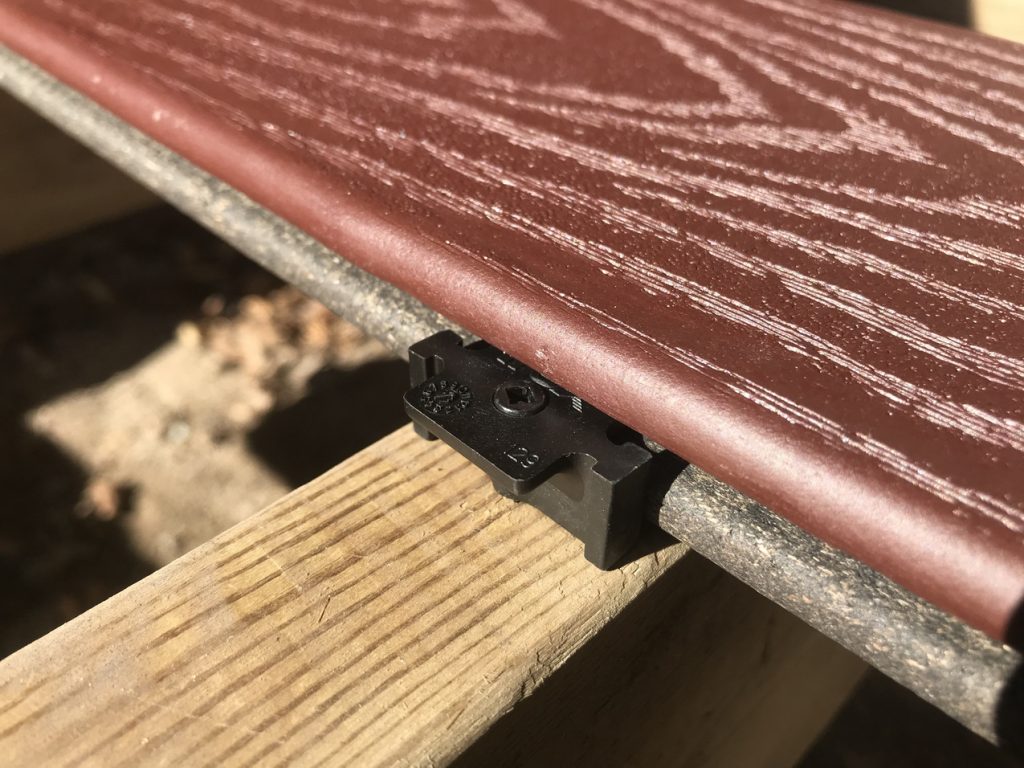Would you like your new deck, gazebo or other outdoor structure to last longer and require far less maintenance? Wood-free alternatives are becoming more common and better, offering easier living, less maintenance and longer working life.
Steel deck frames
The biggest part of any deck is the support frame, and posts, beams and joists are still most often made of wood. Wood combines great strength, resistance to sagging and reasonable price, but it’s prone to rot. Steel deck frames are the newest structural alternative to wood and various systems are made by a handful of companies, each with their own proprietary design and fastening approach.
The steel in these systems is relatively thin so it can be cut on site with a steel-cutting carbide blade in a low-rpm metal-cutting circular saw or chop saw. Even if you’ve never worked with steel before, the learning curve is shallow and simple. It’s not that different from building a wooden deck frame, except the material never rots or rusts and it’s always straight.
Most deck builders still use wood for deck frames, so you may need to educate the professional you hire. Search “steel deck frame materials” online and you’ll find lots of options.
Wood-free deck railings
Most people are surprised by the amount of work involved in finishing and refinishing all-wood deck railings. You can spend longer stripping and refinishing a railing than you will an entire deck. This is why wooden railings are often in dire need of refinishing, and why non-wood deck railing systems were invented.
They can be used on any kind of deck, and the best combine safety, ease of installation, and freedom from maintenance (except for cleaning). Options include aluminum systems with built-in lighting, railing systems made of composite lumber, and glass-based systems that offer a clean appearance along with safety and an unobstructed view.
Wood-free decking

Wooden deck surfaces usually need a lot of ongoing maintenance, and this is the main reason non-wood decking was invented. Right now, there are three main types: wood/plastic composites (WPCs); poly vinyl chloride decking (PVC); and mineral-based composites (MBCs). Of these, WPCs are the most common, though the other types are gaining popularity.
WPCs are made of a blend of recycled wood fibres and recycled plastic, all pressed together to make lumber-like boards. WPCs come in one of two forms: hollow extrusions (less expensive and lighter in weight) or solid lengths (looks and works more like real wood). Both come in the same widths and thicknesses as conventional lumber.
The main drawback with WPCs is that they expand a lot as they heat up. This isn’t a big deal, but you do need to leave 1/8-inch to 3/16-inch of expansion space between the ends of adjoining boards to allow for thermal movement.
Mineral-based composites (MBCs) offer unique advantages. Made from a blend of plastic and minerals, the best MBCs have a fibrous structure similar to wood, with virtually no expansion and contraction from changes in temperature. Stronger than wood/plastic composites, being entirely inorganic means there’s no chance of rot or surface growths.
PVC decking is another wood alternative and it’s taking a larger piece of the Canadian deck building scene. Unlike first-generation, all-plastic lumber from the 1980s, today’s PVC is different because of the way it’s formed. Instead of just solid plastic, top brands include small air bubbles worked into the extrusions as they’re made. This creates better working properties, lighter weight and better traction underfoot.
Regardless of the wood-free deck option you choose, your deck will look better when boards are held down with invisible fasteners as opposed to visible screws driven down from the top. I’d never build a deck without them.







